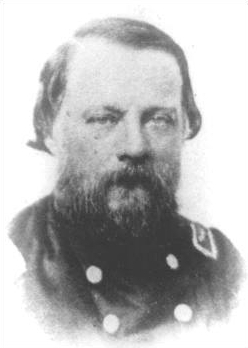Albert G. Blanchard
| Albert Gallatin Blanchard | |
|---|---|

Albert G. Blanchard
|
|
| Born |
September 6, 1810 Charlestown, Massachusetts |
| Died | June 21, 1891 (aged 80) New Orleans, Louisiana |
| Place of burial | St. Louis Cemetery No.2, New Orleans, Louisiana |
| Allegiance |
|
| Service/branch |
|
| Years of service | 1829 - 1840; 1846 - 1848 (USA) 1861 - 1865 (CSA) |
| Rank |
|
| Unit | 3rd U.S. Infantry Regiment 2nd Louisiana Volunteers 12th U.S. Infantry Regiment |
| Commands held | 1st Louisiana Infantry Regiment Blanchard's Brigade Blanchard's Reserve Brigade |
| Battles/wars |
Mexican-American War American Civil War |
Albert Gallatin Blanchard (September 6, 1810 – June 21, 1891) was a general in the Confederate army during the American Civil War. He was among the small number of high-ranking Confederates to have been born in the North. He served on the Atlantic Coast early in the war, commanding a brigade in Virginia before being reassigned to administrative duty due to his age and health. He then led troops during the Carolinas Campaign in 1865.
Blanchard was born in Charlestown, Massachusetts. He accepted an appointment to the United States Military Academy in West Point, New York, and graduated 26th in the Class of 1829. Among his classmates was Robert E. Lee. Initially given the rank of brevet second lieutenant in the 3rd U.S. Infantry, he was assigned to various bases on the Western frontier duty, as well as performing recruiting services and helping engineer improvement to the Sabine River. Blanchard served in the United States Army for eleven years before resigning his commission as a first lieutenant in 1840.
He had a son and daughter by his first wife who died young. His first daughter was Susan Blanchard who later became a noted writer. She married Charles D. Elder of New Orleans. General Blanchard's second wife was Marie Louise Herminie Benoist whom he married in January 1839. The couple moved to her hometown of New Orleans, Louisiana in the 1840s. He entered the mercantile business there and served as a director of the city's public schools.
...
Wikipedia
